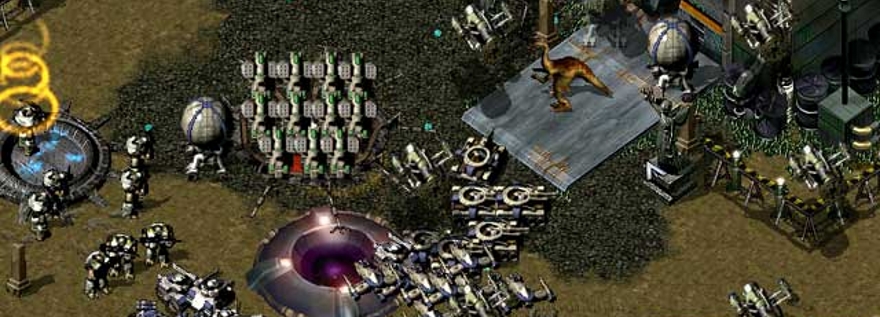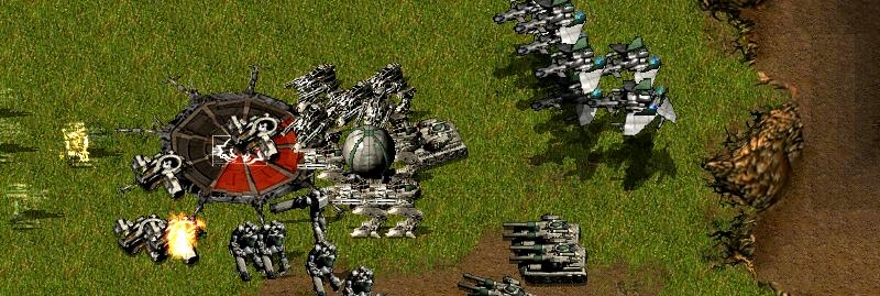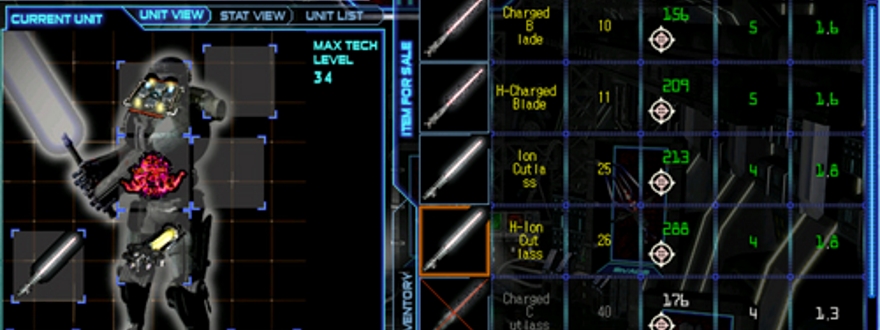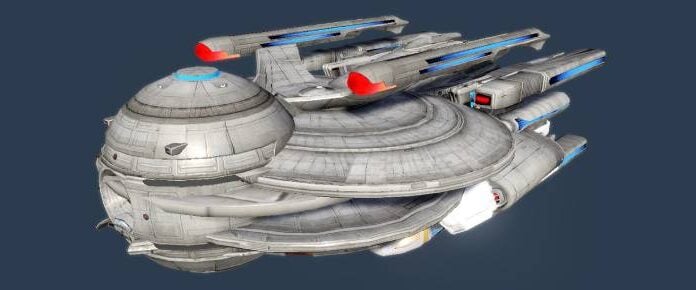
War. War never ends. Especially if it was designed and encouraged to wage forever.
One of the most popular computer gaming genres of the late 1990s and early 2000s was real-time strategy (RTS). Players found the combination of resource collecting, base building, and mass combat a heady mix, and titles like Dune 2, the Warcraft series, and the Command and Conquer series did extremely well both as single-player and limited multiplayer titles.
But with the advent of the MMORPG, game developers looked at the RTS and wondered if this genre would do well in a massively multiplayer environment. Well, there was only one way to find out, and that’s where Shattered Galaxy came in.

The world’s first published MMORTS
MMO players know well the name and reputation of Nexon, one of the largest developers and publishers in the industry. But many might not know that there was a time that this company was called something completely different. When it founded back in 1994, Nexon was Kru Interactive, and it was under this name that MMOs such as Nexus: The Kingdom of the Winds, Dark Ages, and Shattered Galaxy was released.
Kru Interactive pushed out Shattered Galaxy in 2001 to great acclaim. The MMORTS had gathered a lot of interest in the StarCraft-mad country of Korea and won several awards the year it released. However, the company bungled the title’s rollout in North America, forcing an awkward switch from a free-to-play long-running beta to a pay-to-play scheme months after the launch. As such, Shattered Galaxy had difficulty gaining traction in the west.
On its website, Shattered Galaxy makes the claim that it was “the world’s first published massively multiplayer online real-time strategy game.” In all likelihood, it was. After all, this specific sub-genre didn’t have a lot of competition back in 2001.
With a shaky North American release and criticisms that the title looked archaic in an age where 3-D was gaining popularity in RTS games, Shattered Galaxy didn’t explode in popularity in the west the way that Kru (and its North American publisher, Tri Synergy) had hoped.
Still, it wasn’t canceled, and more than a few players found their way into its post-apocalyptic world.

Intense battles. Perpetual war.
Taking place on a battle-scarred planet far from Earth, Shattered Galaxy put players in the roles of humans who can control war robots with their minds. It was on this planet of Morgana Prime that wars raged among players for control over the various territories.
While PvP between four factions was certainly the central core of the game, Shattered Galaxy also offered PvE encounters against aliens hiding in various caves. However, every player could only control a single squad (of six to 12 units) at a time, giving the game a much smaller feel until groups of players teamed up and fought.
MOP reader David, who asked suggested this game as a topic, said, “Shattered Galaxy was an attempt to add persistence and team interaction to RTS-style gameplay, and largely succeeded. It was an excellent mix of both active unit micromanagement and team level tactical coordination.”
As players leveled up their influence, they were able to access and purchase stronger and better units and upgrade them to be more effective on the battlefield. There was plenty of ways to upgrade and grow your avatar’s command capabilities, which hooked players into paying $10 per month after month.
In its 2001 review, Gamespot noted that Shattered Galaxy was a little jarring to get used to after traditional RTS, especially with the limitations of mixed arms and the disparity between player levels. “From a technical standpoint, Shattered Galaxy is somewhat primitive,” the reviewer pointed out. “It runs in 800×600 resolution, uses blatantly 2-D graphics, and is squeezed into a cramped viewing area.”
“It’s a lot of fun, if you’re not too snooty about the so-so graphics,” wrote Ars Technica, which pointed out that the persistent nature of the war gave this game an edge in the field.
One of the most interesting features of the game was reincarnation. Every few months level 50 characters had the opportunity to reroll as a level 1 character and start over again. Those that chose to reincarnate were given extra stat points and two additional unit slots, growing their potential at the expense of time.

The wind-down war
As the years wore on, Shattered Galaxy’s star faded in the east. Known as Tactical Commanders among Asian countries, the MMORTS was quietly closed down in Korea, Taiwan, and Japan by 2008. Nexon did keep it running in the west, however, and transitioned it to a free-to-play model with an optional subscription.
The last significant content update for Shattered Galaxy came back in 2006, with a smaller bug fix arriving in 2011. Even so, the servers have endured to this day, and loyal fans have rallied to raise the flag over Shattered Galaxy once more.
Remakes and graphical upgrades emerged in the community as unlicensed projects, and petitions were sent to Nexon to give love and development focus to Shattered Galaxy once more. While the studio hasn’t responded as players might have hoped, it did upgrade free players to elite status and disabled alien takeovers of unoccupied territories.
“A key moment in SG’s history actually occurred after the company decided to end of life the product,” explained David. “At that point, they didn’t have enough subscribers to keep the battles filled. One of the players (raises hand) came up with a plan whereby the game would actually go free-to-play, but allow people who paid a subscription to level faster and play at a slightly higher power level.
“By doing this the population was immediately refilled to healthy levels, plus there was a constant supply of people who were the prime candidates to start subscribing. This approach was later refined even further, with the addition of once-every-three-month reincarnation events where players could trade their current level for a small amount of longer-term progress, but only if they were actively subscribed that month. This led to a model where a large chunk of the player base who would not have otherwise paid, ended up paying one month out of three, another big win for the company.”
And that’s where we leave Shattered Galaxy today: Enduring and surviving with a cult audience who can’t find this particular mix of gameplay styles anywhere else.
 Believe it or not, MMOs did exist prior to World of Warcraft! Every two weeks, The Game Archaeologist looks back at classic online games and their history to learn a thing or two about where the industry came from… and where it might be heading.
Believe it or not, MMOs did exist prior to World of Warcraft! Every two weeks, The Game Archaeologist looks back at classic online games and their history to learn a thing or two about where the industry came from… and where it might be heading.













